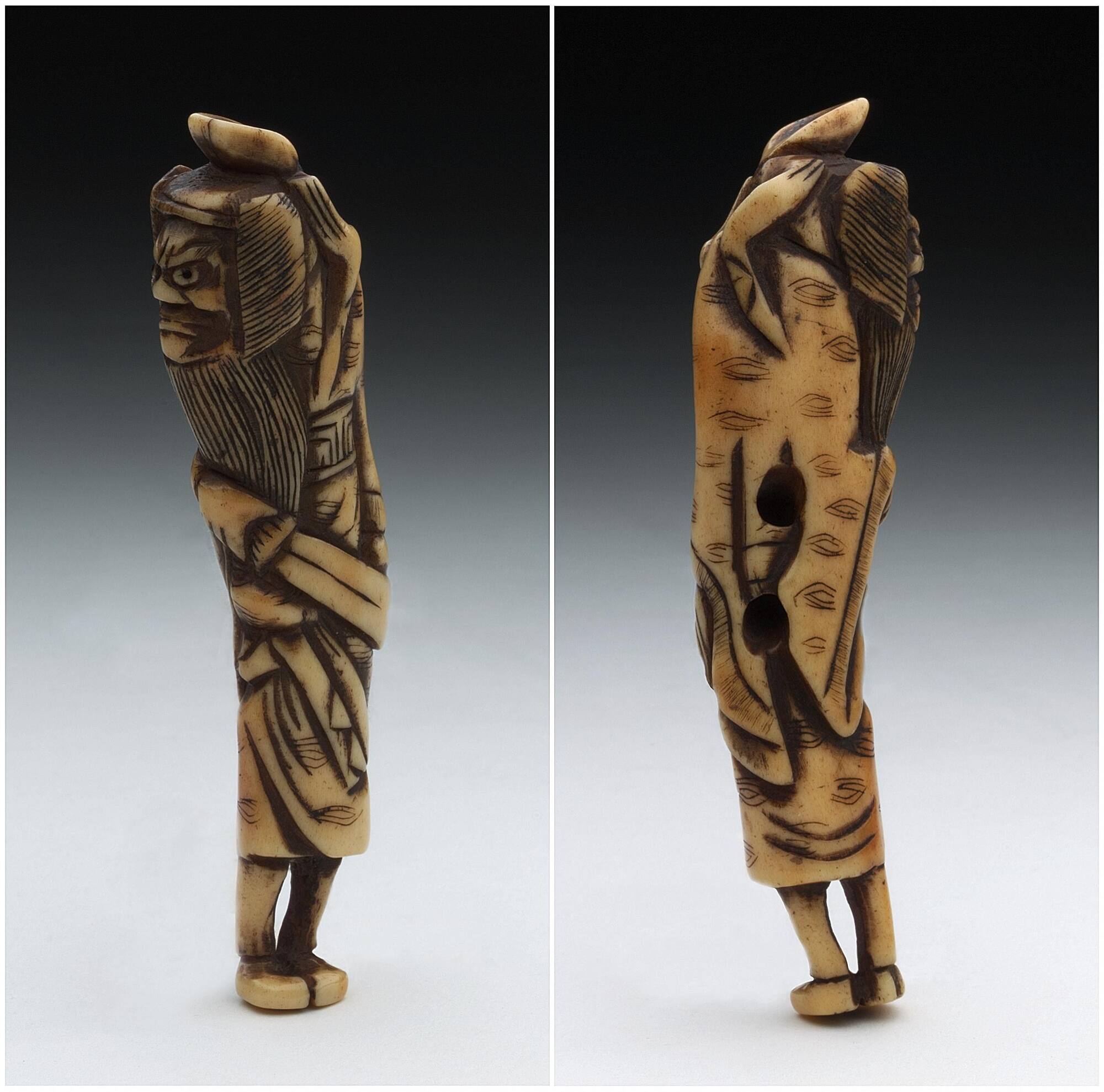
Object Details
Culture
Japan
Date
17th or early 18th century
Medium
Carved deer horn
Dimensions
Height: 3 1/4 inches (8.3 cm)
Credit Line
Memorial gift from the Estate of Charles W. Hay, Class of 1925
Object
Number
73.005.175
BRIEF DESCRIPTIONThis is a netsuke made from deer horn that depicts the character of Shoki, a demon (…)
BRIEF DESCRIPTIONThis is a netsuke made from deer horn that depicts the character of Shoki, a demon queller.WHERE WAS IT MADE?This netsuke was made in Japan.HOW WAS IT MADE?Netsuke were made from a variety of materials. This netsuke was carved from a piece of deer horn. To create such miniature sculptures, artists worked with small knives, chisels and files.HOW WAS IT USED?During the Edo period (1603-1868), the standard attire for a well-dressed Japanese man consisted of a kimono tied with a sash. Because kimonos had no pockets, accessory bags and carrying cases (called sagemono: hanging things) were used to hold personal items such as money, medicines, tobacco and seals (a stamp carved with the owner’s name). Silken cords, attached to the sagemono, were threaded through the kimono sash (obi). A toggle, called a netsuke, was attached to the other end of the cord to prevent it from slipping through the sash. To see a netsuke with an inro—one popular type of sagemono that consisted of small, stacked compartments for holding medicines—search for object number 98.087.006 in the keyword search box.The term netsuke comes from the words “ne”, meaning ‘root’ and “tsuke”, meaning ‘to fasten.’ Early netsuke may have been made from found objects such as pieces of roots, nuts, coral and bone. Over time, netsuke production became more and more varied, refined, and innovative, reaching a high point in the early 19th century. Subjects and decoration of netsuke and sagemono reflected the tastes and aspirations of their owners, often infused with an element of comic irony. As clothing traditions modernized, netsuke came to be collected separately from sagemono, and appreciated as sculptural gems in their own right.WHY DOES IT LOOK LIKE THIS?The character of Shoki (Chung K’uei) originated in China. Notice the rather ugly, fierce expression on the figure’s face. According to legend, during the Tang Dynasty a scholar named Chung K’uei was shunned for his poor looks and denied a position in the government, even though he had passed the qualifying examination. Distraught by such a rejection, he committed suicide. Upon hearing about the circumstances of his death, the Emperor ordered that he be given an official burial. After the burial, the spirit of the scholar appeared before the Emperor to thank him, promising to serve as a guardian to the lands, keeping out all demons forever. Shoki is therefore associated with protection.To see a Japanese painting of Shoki with a captured demon in the Johnson Museum’s collection, search for object number 78.008.001 in the keyword search box.












